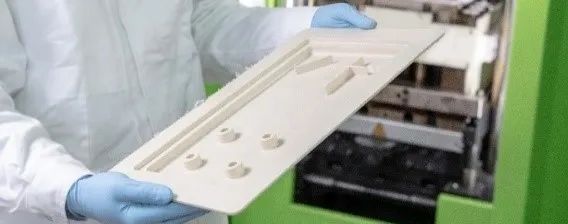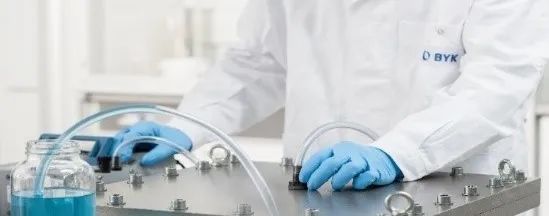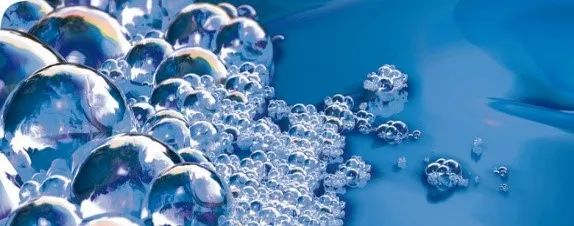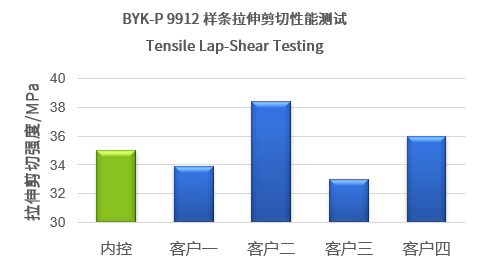Application of BYK-P 9912: Multifunctional Processing Additive in Composite Materials
From pultruded beams for wind power to aerospace prepreg components, from lightweight RTM parts for automobiles to fast-curing SMC molded plastics—advanced composite manufacturing is facing the triple challenges of diversified processes, extreme performance, and intense cost competition. The BYK-P 9912 multifunctional processing additive can help enterprises create more value in composite formulations and manufacturing processes, achieving differentiated competition.
The three main features of BYK-P 9912 product
Demolding


Ready-to-Bond
Direct bonding
Air Release

1. Demolding Efficiency: From "Single Coating" to "Continuous Production"
Pultrusion/RTM/RIMThe high molecular weight branched structure of BYK-P 9912 can form a low surface energy layer with a demolding effect on the mold surface, enabling rapid continuous production. It can achieve dozens of continuous demoldings, reducing the frequency of external mold release agent spraying, and reducing mold cleaning time by 60%.
SMC/PrepregAchieves continuous multiple demolding, maintaining stable release performance even in filled systems (such as calcium carbonate and glass microspheres), and is especially suitable for demolding complex structural parts.
Surface Performance: From "Secondary Processing" to "Ready-to-Use"
Bonding/Spraying ProcessAfter demolding, the surface does not require sanding and can meet the general adhesive strength requirements of structural adhesives (tensile shear strength ≥30MPa). It is possible to attempt direct painting without sanding, eliminating the sandblasting and surface roughening processes, thereby reducing time costs by 40%.

■Epoxy Acid Anhydride Pultrusion System Epoxy/Anhydride
■Epoxy-Amine Curing System Epoxy/Amine
3. Resin compatibility: from "dedicated to a single system" to "universal for all resins"
Chemical adaptationCompatible with epoxy-amine/epoxy-anhydride curing systems as well as polyurethane, vinyl ester, and unsaturated polyester thermosetting resin systems, providing flexibility to adapt to resin formulations for different processes.
Enhanced material general-purposeThe system exhibits stability across glass fiber, carbon fiber, aramid fiber, and hybrid fiber systems, avoiding the process adjustment costs caused by changing fiber types.
Convenience of production managementIn composite manufacturing enterprises, multiple processes and resin formulations can be adapted to avoid introducing excessive types of internal release agents, thereby reducing management costs and preventing production errors.
Cross-Process Technology Advantage: Decoding the Molecular Design of "One Agent, Multiple Uses"
The polar differentiated molecular structure of BYK-P 9912 is precisely the key to solving the challenges of multiple processes.
Low polarity release groupForms weak interactions with the surface of metal/composite molds, reducing interfacial separation force during demolding; suitable for complex curved molds (such as RTM female molds).
Moderately polar compatible segmentsForms molecular-level dispersion with the resin matrix without affecting the kinetics of the curing reaction.
Highly polar anchoring groupThrough electrostatic forces, physical entanglement with the resin is achieved, enabling the internal mold release agent remaining inside the product after sanding to remain immobile without requiring surface treatment, thus ensuring stable and reliable bonding strength.
Traditional Solution vs. BIC Solution: Multi-Process Cost Reduction Formula
Material costSingle-dose substitute release agent + defoamer + interface treatment agent, significantly reducing raw material costs.
Time costEliminate post-processing and process debugging time, improving the continuous manufacturing efficiency of prepreg molding/RTM and other methods.
Quality CostAn internal mold release agent with defoaming effect helps eliminate bubbles and improve the porosity of the product.
BYK-P 9912
Traditional Internal Release Agent
Composite additives: combining defoaming, demolding, and sanding-free properties
Single-function additive: only possesses demolding properties and has a significant impact on subsequent bonding performance.
Highly versatile: suitable for epoxy (amine-cured + anhydride-cured), PUR, UPR, VE, etc.
Poor universality: most internal release agents are only suitable for 1-2 resin systems.
Low-viscosity liquids have a relatively low impact on overall thermodynamic performance.
Reduce the overall thermodynamic performance of the product
The release agent is stable and does not separate, and can remain stably mixed with the resin system for a long time.
The release agent is prone to stratification and is difficult to stably coexist with the resin system for a long time.
【Copyright and Disclaimer】The above information is collected and organized by PlastMatch. The copyright belongs to the original author. This article is reprinted for the purpose of providing more information, and it does not imply that PlastMatch endorses the views expressed in the article or guarantees its accuracy. If there are any errors in the source attribution or if your legitimate rights have been infringed, please contact us, and we will promptly correct or remove the content. If other media, websites, or individuals use the aforementioned content, they must clearly indicate the original source and origin of the work and assume legal responsibility on their own.
Most Popular
-

List Released! Mexico Announces 50% Tariff On 1,371 China Product Categories
-

EU Changes ELV Regulation Again: Recycled Plastic Content Dispute and Exclusion of Bio-Based Plastics
-

Mexico officially imposes tariffs on 1,400 chinese products, with rates up to 50%
-

Clariant Unveils Cost-Cutting Plan Details, Plans to Shut Down Multiple Plants
-

Nissan Cuts Production of New Leaf EV in Half Due to Battery Shortage






